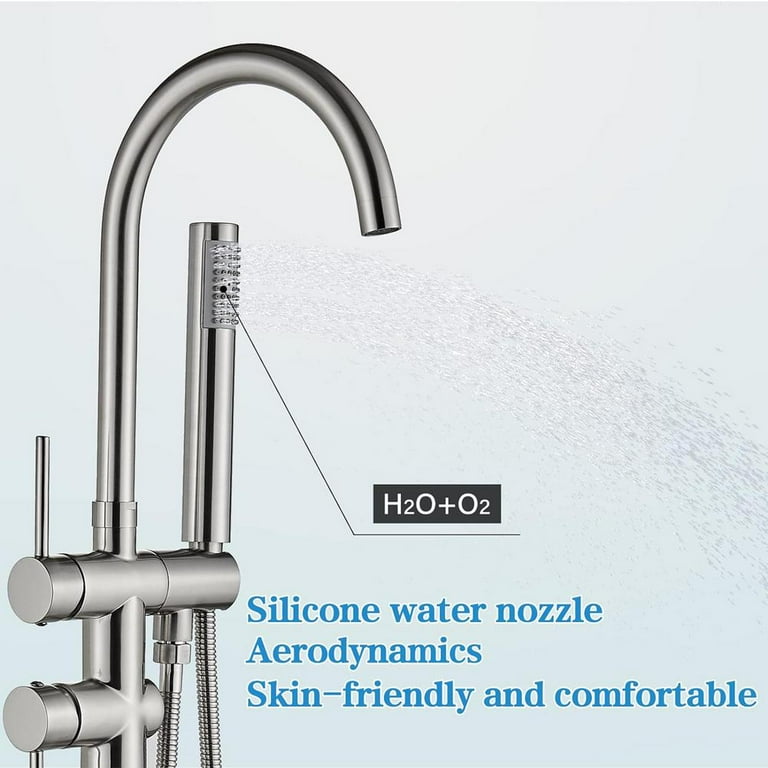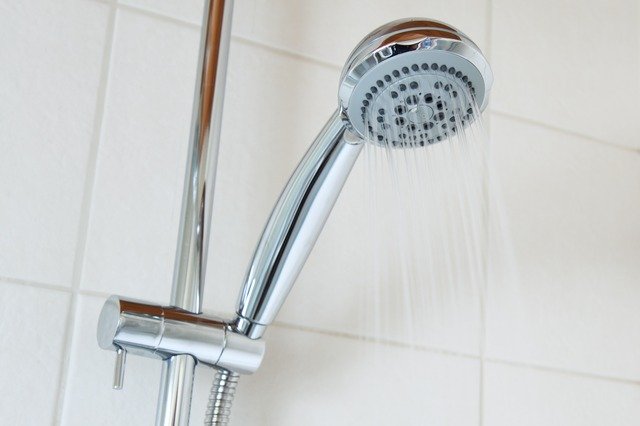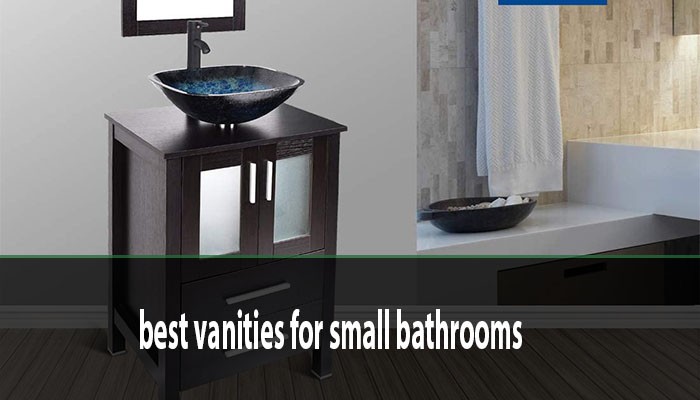Are you considering a bathroom makeover and dreaming of a sleek, freestanding bathtub with a stylish faucet? Installing a freestanding bathtub faucet might seem like a daunting task, especially if you’re not a plumbing expert.
But fear not! With a little guidance and the right tools, you can tackle this project with confidence. Imagine transforming your bathroom into a spa-like retreat, where you can unwind after a long day. In this guide, we’ll walk you through each step of the installation process, ensuring that you feel empowered and equipped to handle it on your own.
Get ready to impress yourself and elevate your space with this beginner-friendly approach to installing a freestanding bathtub faucet. Let’s dive in and make your bathroom dreams a reality!

Credit: www.bathselect.com
Table of Contents
Tools And Materials Needed
Begin by gathering all the tools and materials for the project. You will need a wrench, screwdriver, and a measuring tape. These tools help in securing the faucet and ensuring a proper fit. A drill might be necessary for making new holes.
Make sure to have plumber’s tape to prevent leaks. This is essential for sealing connections. A bucket is useful for catching any water spills. Lastly, get a new freestanding bathtub faucet. Ensure it matches your bathroom’s style.
Safety is important. Wear gloves to protect your hands. Having a towel nearby helps in case of spills. These items are all you need to start the installation.

Credit: www.amazon.com
Choosing The Right Faucet
Freestanding faucets come in many types. Floor-mounted faucets stand on the floor. They are tall and reach over the tub. Wall-mounted faucets attach to the wall. They save space and look modern. Tub-mounted faucets attach to the tub itself. They are common and easy to use. Each type has its own style and function. Choose one that fits your bathroom.
Think about the style of your bathroom. Does it look modern or classic? Choose a faucet that matches this style. Look at the finish of the faucet. Chrome, nickel, and brass are popular. They add shine and beauty. Make sure the faucet works well. Check if it has temperature control and easy handle movements. These features make it easier to use.
Preparing The Installation Area
Ensure the area is clean and dry for your new faucet. Gather necessary tools and materials nearby. Confirm water supply connections are accessible for easy installation.
Checking Plumbing Connections
All plumbing connections must be checked. Ensure water flows smoothly. Use a wrench for tight fittings. Leak-free connections are essential. Inspect pipes for rust. Replace damaged pipes quickly. Check for blockages. Clear any found immediately. Test water pressure often. It must be stable. Check valve positions. They should be correct. Ensure hot and cold water lines are separate. Avoid cross-connections. Double-check everything before proceeding.
Ensuring Floor Stability
The floor must be strong. It supports the bathtub. Inspect for cracks or damages. Repair issues promptly. Use a level tool to check. Floors must be even. Support beams must be solid. Reinforce weak areas. Use plywood for added strength. Ensure tiles are secure. Loose tiles can cause instability. Clean the area thoroughly. Dirt can affect stability. Make sure the surface is dry. Moisture weakens the floor.
Step-by-step Installation Process
Installing a freestanding bathtub faucet is simple with our beginner-friendly guide. Follow easy steps to secure and connect your faucet. Enhance your bathroom experience with a new, elegant fixture.
Assembling The Faucet
Start with laying out all parts. Check the instruction manual. Gather tools like screwdrivers and wrenches. Follow the steps in the manual. Connect the faucet pieces. Ensure tight connections. Check for leaks. Use plumbing tape if needed. Align all parts correctly. Tighten screws securely. Check stability of assembled faucet.
Connecting Water Supply Lines
Locate water supply lines. Attach them to the faucet. Use a wrench to tighten connections. Make sure lines are secure. Check for leaks. Turn on water slowly. Watch for any drips. Adjust connections if needed. Ensure water flows smoothly. Tighten any loose connections. Confirm no leaks are present.
Securing The Faucet To The Floor
Position the faucet on the floor. Mark where screws go. Drill holes for screws. Place the faucet over holes. Insert screws into the floor. Tighten screws with a screwdriver. Ensure faucet is stable. Check for wobbling. Adjust screws if necessary. Ensure faucet stands firm. Confirm it’s securely attached.
Testing The Faucet
Testing the faucet ensures proper installation of a freestanding bathtub faucet. First, check water flow and temperature control. Then, confirm there are no leaks or loose fittings.
Checking For Leaks
Turn on the water gently. Look for any drips around the faucet base. Pay attention to the connections and joints. They are common places for leaks. If you see water, tighten the connections. Use a wrench if needed. Make sure all parts are secure and tight. Leaks can waste water and cause damage.
Adjusting Water Flow
Slowly turn the handle to check water flow. Ensure it runs smoothly. Both hot and cold water should work. If not, check the supply lines. They might need adjustments. Proper flow means a perfect setup. Enjoy your new faucet. It should work without issues.

Credit: www.walmart.com
Maintenance Tips
Discover easy steps for installing a freestanding bathtub faucet. Ensure you have the right tools. Carefully follow the instructions for a smooth installation process. Enhance your bathroom with a new faucet, adding style and functionality.
Cleaning The Faucet
Keep the faucet looking new with regular cleaning. Use a soft cloth and warm water. Avoid harsh chemicals to prevent damage. Dry the faucet after cleaning. This prevents water spots. Be gentle with any scrubbing. This keeps the finish smooth and shiny. Ensure all parts are dry before use.
Regular Inspections
Check the faucet for leaks often. Listen for any dripping sounds. Tighten loose parts with a wrench. Look for rust or corrosion. Replace any worn-out washers. Keep the area around the faucet dry. This prevents mold from forming. Regular checks can catch problems early.
Frequently Asked Questions
What Tools Do I Need To Install A Bathtub Faucet?
To install a freestanding bathtub faucet, you’ll need a wrench, plumber’s tape, and a screwdriver. Having a level and measuring tape ensures accurate installation. These tools help achieve a secure and leak-free setup, making the process smoother and more efficient for beginners.
How Long Does Installation Usually Take?
Installation of a freestanding bathtub faucet generally takes about 2 to 3 hours. This time can vary based on skill level and preparation. Having all tools ready and following instructions carefully can speed up the process, making it manageable even for beginners.
Can I Install A Faucet Without Professional Help?
Yes, installing a freestanding bathtub faucet can be a DIY project. With the right tools and instructions, beginners can handle the installation. It’s important to follow guidelines carefully. This ensures a secure and leak-free faucet, saving on professional installation costs.
What Are Common Installation Mistakes To Avoid?
Common mistakes include not using plumber’s tape and over-tightening connections. Incorrect leveling can also cause issues. Ensure all parts are aligned properly to prevent leaks. Double-checking your work at each step helps avoid these errors, leading to a successful installation.
Conclusion
Installing a freestanding bathtub faucet is easier than you think. Follow these steps to create a spa-like bathroom. Start with gathering your tools and materials. Next, carefully measure and mark the location. Install the base and secure the faucet. Tighten all connections to prevent leaks.
Test the water flow for smooth operation. Enjoy your new, stylish bathroom addition. Remember, patience and attention to detail are key. With practice, your skills will improve. Don’t rush; take time to do it right. This project boosts both bathroom appeal and your DIY confidence.
Happy renovating!






